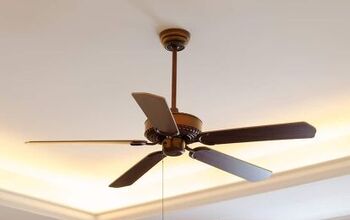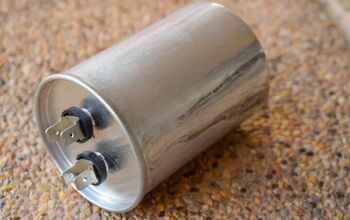Kenmore Washing Machine Leaking Water From Underneath?

The last thing you want when you start doing laundry is a leak coming from underneath the washer. You undoubtedly want to take care of that situation before your laundry piles up. Not to mention, you’re already standing in a puddle of water.
There could be multiple reasons your Kenmore washing machine is leaking from underneath. However, the two most common issues are problems with the drain pump and tub seal. Luckily, following a few simple steps can help you repair these problems.
Keep in mind that there are many steps to fixing the drain pump and tub seal. It may look overwhelming at first, but following the steps isn’t as hard as it may appear. Now, grab your tool kit and get ready to take a look!
Do You Need Appliance Installation or Replacement?
Get free, zero-commitment quotes from pro contractors near you.

Check Your Washing Machine’s Drain Pump
The drain pump is responsible for pumping the water through the drain pipe. If the drain pump is cracked, damaged, or worn out, it will leak water. A faulty drain pump could be coming from worn-out bearings. If the drain pump is defective, you will need to replace it. The drain pump is not repairable.
How to Replace Your Drain Pump
In order to replace your drain pump, you will want to make sure that you first cut off the power to your machine. As you know, water and electricity do not mix well, so safety first.
Note: If your Kenmore washing machine is still under warranty, attempting any DIY repairs could void the warranty. Check your paperwork first to verify if the warranty will cover the necessary repairs; if so, call in a pro.
Before you dive into fixing the problem, you will need a few items along the way.
Tools Needed for the Job:- A new drain pump. You can purchase these on Amazon, averaging around $20 to $25.
- A nut driver to remove screws.
- A bucket to collect any water that leaks from the washing machine.
- A couple of old towels. These are solely for containing the mess. Try to use towels that you do not mind messing up.
- Quality electrical tape and seal connections. You can find both of these at Lowe’s and similar home improvement stores. The two items will average out around $15 to $25.
- Wire ties
Step One: Make Sure No Power Is Going to the Machine
Unplug the washing machine. Don’t just turn it off as it could power on accidentally. This is just a friendly reminder to assure that safety comes first.
Step Two: Remove the Front Panel
You will need to use the nut driver to remove the bottom screws on your washer’s front panel. Pull the bottom of the panel and let it fall.
Step Three: Drain the Filter Basket
Put a bucket underneath the drain cap and unscrew the cap. Remove the filter basket and let it drain into the bucket.
Step Four: Remove the Old Pump and Motor
First, stuff the old towels underneath the pump. Turn your pump clockwise about 1/8th of a turn. This should allow the pump and motor to slide out relatively easily.
Step Five: Connect the Adapters
Steps five and six are about connecting adapters for different connectors. The adapter will have two 6-inch wires hanging from it: one female spade connector and one male connector.
Start by inserting the female over the existing spade connector. Then insert your male into the old connector attached to your old motor.
Step Six: Secure the Adapters
Use electrical tape to tape around the wires and the connectors. This step will reassure that the wires and connectors stay put. Otherwise, they could potentially vibrate out of place when you are using the machine.
Step Seven: Install the New Pump and Motor
To install the new pump and motor, you will simply reverse the steps you have already followed. Line up the motor inside of the housing, and slide it into place. Rotate the motor 1/8th of a turn clockwise.
This should lock your pump and motor back into position. Finally, replace the filter basket and cap, and your machine is ready to test!
Check Your Washing Machine’s Tub Seal
The tub seal’s job is to stop water from leaking onto the main tub bearings. When replacing a tub seal, you need to replace the bearing kit as well. If the tub seal is leaking, chances are the bearing kit is already damaged.
Most likely, replacing the tub seal and bearings involves taking apart the majority of your washer. You will want to follow these steps closely to reassure that you do not miss one.
If you opt to continue with the DIY route, then once again, you will need a few tools:
Tools You Will Need for the Job
- New tub seal and bearing housing. You can find these two parts as a pair on Amazon for around $60.
- Slotted, or flat-head, screwdriver
- Socket wrench
- 7/16-inch socket
- Socket extender
- Spanner wrench
- Hammer
- Pliers
- Towels (Once again, you will be using towels to contain the mess).
Step One: Power Down the Machine
Once again, turn off the machine and unplug it from the wall. It’s vital to stop the flow of electricity, so you don’t end up getting a shock, or worse.
Step Two: Remove the End Caps and Panel
You will see two plastic end caps. Pop the caps off, and underneath you will see two screws. Remove the screws, and rotate the panel up to remove that as well. By now, you should have exposed the wire harness and spring clips.
Step Three: Unplug the Wire Harness
Unplug the wire harness connected to the control panel, and insert the slotted screwdriver into the spring clips. There should be one spring clip on each end of the washer.
Use the screwdriver to push down and forward to release the spring clips.
Step Four: Remove the Washing Machine Cabinet
Tilt the washing machine cabinet toward you and slide it off of the base. This step might be more manageable with an extra pair of hands.
Step Five: Remove the Agitator Cap and Agitator
Twist off the fabric softener dispenser, and use the screwdriver to pry the agitator cap off the agitator.
Connect the socket, socket extender, and socket wrench. Hold tightly to the agitator with one hand while using the other to remove the 7/16-inch agitator bolt. Lift the agitator out of the tub and away from the driveshaft.
You will now be able to see the tub nut.
Step Six: Remove the Tub Nut
You will need to lay your spanner wrench over the driveshaft and on top of the tub nut. Use the hammer to hit the spanner wrench and turn it counter-clockwise. This step should expose the drive block.
Step Seven: Remove the Plastic Tub Ring and Drive Block
Press down on the plastic tub ring. Pop the eight clips, and remove the plastic tub ring. Being mindful of the fill spout, remove the inner tub out of the washer. Use the side of your hammer to strike the drive block. You will need to carefully slide the drive block off of the agitator drive shaft.
Step Eight: Remove the Tub Brackets
Use the pliers to release the three suspension rings from the tub brackets. You will find these attached to the bottom of the outer tub. Using the pliers again, remove the counterbalance spring from the back end of the washing machine.
The final three screws will be holding the tub brackets. Remove the screws, and pull the tub brackets from the outer tub.
Step Nine: Remove the Drain Tube and the Outer Washtub
Place a towel underneath the washer to catch excess water. Next, pull the water pressure switch tube from the bracket located to the side of the outer washtub. Hold the drain tube and squeeze both ends with pliers.
Finally, you can wiggle the drain off of the connector. Grab the outer washtub and pull it away from the driveshaft. You can use a lubricant to make this job a bit easier. Be sure to lay the outer washtub on its side.
Step Ten: Replace the Tub Seal, Bearing Housing, and Agitator Shaft
Replace the old tub seal and bearing housing out of the bottom center of the tub with the new parts. Pull the original metal collar from the agitator shaft and replace it with the new one. Slide the exterior tub back onto the shaft.
Step Eleven: Reconnect the Hoses and Reassemble the Washing Machine
Reconnect any hoses to the exterior of the tub. Finally, reverse the disassembly steps in order to put the rest of your Kenmore washer back together.
Related Questions
Would it be more affordable to repair the tub seal than replace it?
Unfortunately, a tub seal is not repairable. Therefore, the only option is to replace it. That goes along with your bearing kit as well.
What can I do to prevent water from leaking underneath my Kenmore washer in the future?
Ideally, you can replace the parts once you get close to having the machine for 10 years. However, a good quality washer, such as Kenmore, could last for up to 13 years with proper maintenance. Proper maintenance would include things such as limiting your laundry. This goes for load size as well. Even just cutting out one load a week makes a difference.
Do You Need Appliance Installation or Replacement?
Get free, zero-commitment quotes from pro contractors near you.

Time for a Load of Laundry
By now, you hopefully have managed to repair your washing machine. Or, at least you’ve figured out the issue and have decided to call in a professional. Either way, once you’ve done the job, you can plug your washing machine back into the receptacle and let it get back to work!

Stacy Randall is a wife, mother, and freelance writer from NOLA that has always had a love for DIY projects, home organization, and making spaces beautiful. Together with her husband, she has been spending the last several years lovingly renovating her grandparent's former home, making it their own and learning a lot about life along the way.
More by Stacy Randall











![The 5 Best Angle Grinders – [2022 Reviews & Buyer's Guide]](https://cdn-fastly.upgradedhome.com/media/2023/07/31/9071326/the-5-best-angle-grinders-2022-reviews-buyer-s-guide.jpg?size=350x220)















